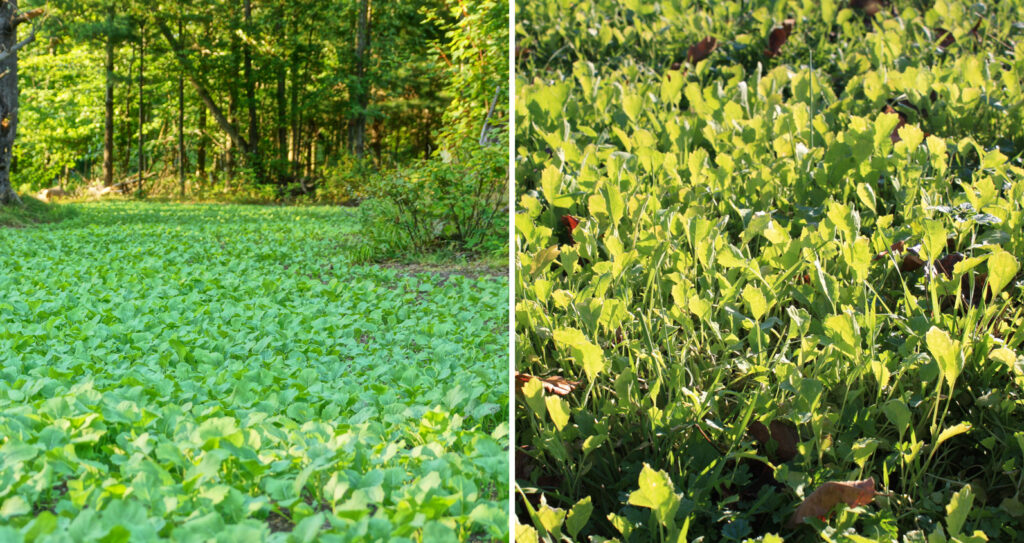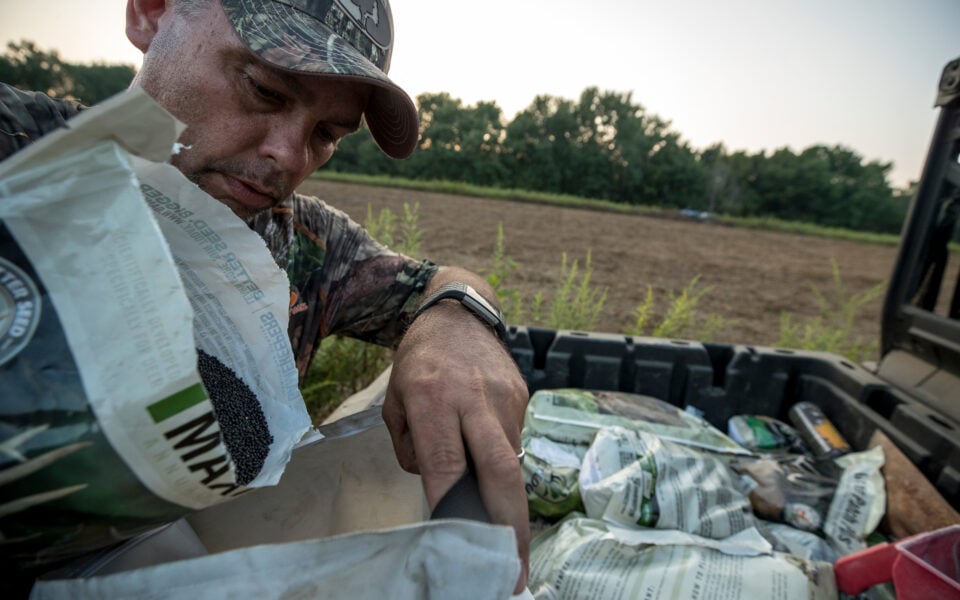How Planting Rates Affect Food Plots: During the last 10-15 years the agricultural industry has taken huge strides in efficiency and crop yields. Modern hybrid varieties of cash-crops are producing record outputs even as urban sprawl threatens available acreage. Agronomists, soil scientists, and botanists are all finding innovative ways to harness the rapidly changing technology available to increase crop yields, efficiency, and most importantly, to conserve and encourage soil health.
Even with all advancements in fertilization, irrigation, and equipment, seed population is still a major factor in determining a crop’s success. There are so many variables that can play into having a successful planting, but seed population is at the top. In the world of food plots and planting for wildlife, maximum yield is usually not the end goal, but rather how effective it was at attracting and feeding the desired species of animals. After all, these planting are being consumed by critters, not by a combine.

The appropriate amount of seed is important to avoid stunted growth
After years of helping customers troubleshoot planting issues, I can safely say that “estimating/calculating field size” and “planting rates” are two of the most common problems. The two issues go hand in hand and often times the over-estimation of acreage, coupled with over application of seed turns into a two-fold problem. Knowing the actual acreage or “square footage” of the area to be planted and taking the time to measure the appropriate amount of seed to properly cover that given field will go a long way in the success of the planting.
There is a pretty diverse array of plant species that are used for food plots and wildlife plantings. Among all the different varieties available, some are much more affected by plant population or competition than others.
Plants in the brassica family (turnips, beets, rape) for example are very small seeds that, depending on the variety can have broadcast rates as low as 5 to10 pounds per acre. These very small seeds can grow a lot of tonnage in a growing season (with appropriate rainfall and nutrients) if the correct seeding rate is followed. However, when seeds in the brassica family get spread too heavy for the given amount of soil, competition for root space, moisture and nutrients can quickly become too great, resulting in a stunted crop or field die-off.
In my experience it is best to use a hand-spreader for these small seeds so you have good control of the amount you are putting out. Ideally you should spread it conservative enough to cover the field in two different directions to ensure even seed distribution. ATV and pull behind spreaders can work so long as the gate opening can be fine-tuned for these tiny seeds.
Another issue with seeding rates in brassica crops that produce bulbs (like turnips or sugar beets) is bulb or tuber production versus “tops” or forage output. “When” during the growing season these are planted, how long they have to grow, even the amount of moisture and nutrients they receive at different times can impact “root growth” verses “top production.” But all things being average and equal, “planting too heavy/thick” affects more gamekeepers than any of the other concerns. Plants like turnips or radishes that are planted too heavily will usually produce a very small bulb or tuber in response to the overcrowding.
 On the opposite end of the spectrum are cereal grains such as wheat, triticale or oats that can have seeding rates up to 120 pounds per acre. Grains are also easier to spread and allow for a larger margin of error for over-application. Cereal grains are often used as the bulk of many blends that contain brassica, cereal grains, clover, etc. Attention should be paid to the percentages at which the different seeds are used.
On the opposite end of the spectrum are cereal grains such as wheat, triticale or oats that can have seeding rates up to 120 pounds per acre. Grains are also easier to spread and allow for a larger margin of error for over-application. Cereal grains are often used as the bulk of many blends that contain brassica, cereal grains, clover, etc. Attention should be paid to the percentages at which the different seeds are used.
Take BioLogic Full Draw for example, a blend that contains 25% brassica, 45% grains, and 30% annual clovers. If this blend is planted at the correct rate for a given acreage, you will see everything in the blend flourish in the field. If this blend gets over seeded, the brassicas can quickly overtake the grains and clover.
Another scenario that can cause overcrowding and competition is “uneven distribution of seed.” This can occur even when the area has been measured and the proper amount of seed used. Using a spreader that allows you to make fine adjustments to the opening gate is critical to be able to spread the seed evenly. As mentioned before, I have found it helpful to set your spreader conservative enough to make at least two passes across the field in different directions.
In some cases, you may be planting small fields out of a large bulk bag of seed. I carry a scale in my tool box that allows me to measure seed very closely while in the field. This is a lot better than guesswork and will not only save you seed, but help your crops by eliminating the chance of over seeding. As long as you factor in the bucket, pale or bag to put the seed in, some digital fish scales work well for weighing seed and are relatively compact.
Extra fertilizer is one way to help alleviate some of the problems associated with plants that are competing for nutrients. When there is enough rainfall, a secondary application of a high nitrogen fertilizer can give the plants a boost and add some extra growth.
In closing, remember, for food plots or other wildlife plantings, seed population doesn’t have to be exact, but you do want to come as close as possible for a successful plant growth and maximum yield. Know your plot size, use appropriate amounts of seed, and become acquainted with your equipment.





